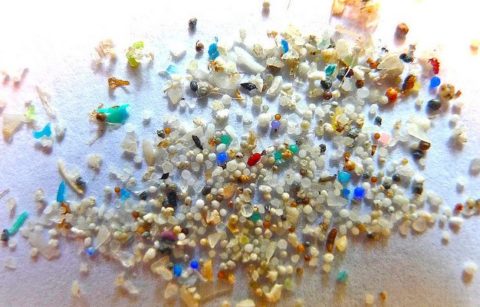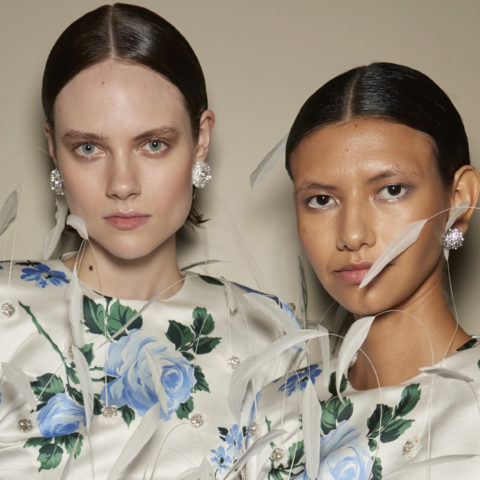Goodbye forever, microbeads!

Last week the Canadian government announced that it intends to ban microbeads from personal care products because they’re polluting the Great Lakes. What are microbeads? Tiny spheres of plastic collect toxins from our skin and teeth, granted. But they also collect toxins from everywhere else, as they’re flushed through the sewage system and added to the Great Lakes, and then travel up the food chain, into the bodies of humans, and without the hope of disintegration or removal from the cycle. Gross!
Over the last twenty years, microbeads were added to toothpastes, scrubs, and soaps, replacing natural remedies like salt, nut shells and diatomaceous earth. They’re so small they can’t be filtered and their colours and shapes resemble that of fish eggs. On one hand, it’s impressive that personal hygiene companies cared so much about removing dirt from our bodies that they included these guys in everything. On the other hand, it’s completely insane.
Does the amount of dirt removed from salt versus microbeads really make that big of a difference? Why would freakishly clean skin even be desirable anyway? Allergies and autoimmune diseases are believed to be the result of over-sanitizing. Humans have become so clean that they’ve gone back to toxic again!
Everyone knows the human race is insane. We’re constantly creating elaborate problems for the next generations to solve. It’s like our special talent. Johnson & Johnson says it’ll stop putting microbeads in their products by the end of 2017. Loblaws says it’ll stop by 2018. Many other companies are already on board but this doesn’t mean that microbead pollution will magically disappear. Bottles of microbead-infused products will be floating around stores and bathroom cupboards for a while. It’s up to us to stop using them and flushing them down the drains.
How can you tell if you’re about to buy something with microbeads in it? Check the label of ingredients for “polyethylene” or “polyproplylene.” You can also download the app called Beat the Microbead to scan barcodes and check. A lot of companies have already switched back to using their older, natural exfoliants and detoxifiers. Apricot seeds, cocoa shells, coffee grounds, and so many other alternatives are making their well-deserved appearances again. Rubbing a bunch of sweet plant-based formulas on your body sounds way better than rubbing plastic spheres on yourself anyway. You can check out our favourite eco-friendly deodorants, concealers, toners, and more here:
Natural deodorants that really work: 3 tried and tested picks worthy of your armpits
Natural makeup must-haves: 9 Beauty Panel tips on the best eco-conscious products out there







